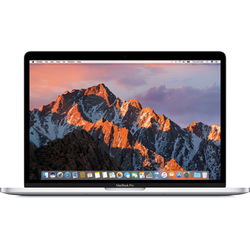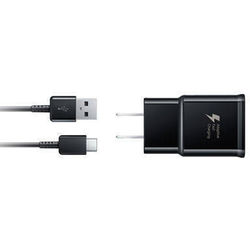고정 헤더 영역
상세 컨텐츠
본문
In part 1, I outlined the issues with using SSD drives on Mac OS X Yosemite and above and why you should not use TRIM on third party SSD drives. In part 2, I am going to share how I installed my drive into my Mid 2010 Mac Pro and how I followed the advice from Rich at Create Pro to create a clean install and appropriate backups.
Should Mac Users Dread The Switch? Episode 328; Jul 17, 2018 Learn These Top Tips To Improve & Speed Up The Way You Work With Plug-ins In Pro Tools. Road Gatehouse - John Barrett Talks About The New Studio And The Equipment. Availability Of Angelbird SSD Drives With Native Trim Support For Macs. Dell Inspiron 13 7373 13.3-Inch 256GB SSD Core i7 2-in-1. Dell Inspiron 13 7373 13.3-Inch. Acer NH.Q2QAA.008 Nitro 5,. 8803 Nonstandard Work - The Nature. 9990 Double Page Spread, Judi James. 0071 Dynamics of MacIntosh Excel, John R Adler. I5 Notebook - Intel Core i5-6200U, 256GB SSD, 4GB RAM, Windows 10. Librarian, 5. Of the Line, 6.
Bring On The Angelbird SSD Drive So over the Christmas break I choose to install my Angelbird SSD wrk for Mac Pro drive. Angelbird have a range of different SSD drives each ready to use in a different type of Mac so there is one for the MacBook Pro and another generic drive.
The Mac Pro drive comes with a piece of aluminium and instruction so that I could fit the SSD drive in one of the SATA drive caddies in my Mac Pro. Once in my Pro Tools computer, a Mac Pro, I needed to format it but the first pleasant surprise is that it shows up in Disk Utility as an Apple drive, so to the Mac it is an Apple drive, so the Angelbird has metamorphosed into an Apple.
Clean Install From Scratch Once formatted, I installed a clean version of the Mac OS following Rich from Create Pro's advice, rather than clone my existing boot drive. Then I installed pretty well everything from scratch. The only cheating I did was to use Apple's Migration Assistant to move across my computer and network settings, which saves alot of messing around with passwords etc. Making setting up the machine alot easier as my Mac Pro is my office machine as well as my Pro Tools machine. All through the process I left my Crucial drive intact so I could boot from that and continue working as normal - another great tip from Rich at Create Pro. And there we have it. I now have my Mac Pro booting of my Apple, sorry Angelbird SSD drive. Clones And Backups Next I cloned both my new Angelbird drive and my old Crucial drive, using Carbon Copy Cloner, onto two partitions of by startup backup drive so that I have a clean copy of my boot drive as well as a safety copy of my Crucial boot drive.

Then I wiped the Crucial SSD drive and then set up CCC to clone my Angelbird drive and to update it everyday so that I always have a clone of my boot drive, so if there is a major problem with my boot drive I can be back up and running in a couple of minutes of the Crucial clone drive. Then I always have the clean clones to fall back onto it necessary.
Part 3 In part 3 of the review we move onto a different SSD drive from Angelbird.
Looping has become a common tool in the artistic arsenal of many a modern guitarist. Often, a single loop is lathered with layers that, in the hands of a Dustin Wong, can become a riot of interlocking rhythm, recalling Phillip Glass. Alternately you have Noveller, whose mix of ambience and melody is as evocative as her hand stitched film work. Then there is Bill Walker, whose rootsy loop work could easily be mistaken for an actual band performing.
A mastery of the eight-track Looperlative LP-1, with its ability to record multiple loops and then subdivide, punch into, and reverse them—allows the California guitarist to avoid any hint of static repetition. Walker’s performances are marvels of spontaneous composition; though enhanced by seeing him construct them, their musical interest does not rely on it. The tunes speak for themselves, as is evident on his solo release, Sanctuary. What kind of music were you playing when you first became proficient on the instrument? I was into the normal teenager stuff, British Invasion, American rock, pop and soul, but also the emerging finger style guitar playing of people like John Fahey and Bert Jansch, as well as prog rock and fusion music.
Angelbird/ssd Wrk John Page Line 6 For Mac
I was attempting to play and assimilate different influences. There was a lot of music playing in my home, my parents were huge classical and jazz music fans, My dad would bring home records that he had read reviews about: “Hey kids, I brought home an album by this band Yes, ever hear of them?” I can remember hacking away at Roundabout, at an unsupervised high school party, thinking I was starting to get somewhere on the guitar. What led you to create experimental music?
I was looking for a way to expand what I could do as a solo guitarist, so I became fascinated with loop recorders and how they could enhance my solo performance. The deeper I delved in to it, and the more sophisticated the tools became, the more possibilities were at my fingertips. I could create a kind of guitar chamber music, and evolve a compositional style that went beyond the typical solo guitarist approach. In a live looping improvisation, I’m now often creating upwards of four to eight separate tracks of looped guitar, utilizing a number of sampling techniques, including track speed toggling, reverse, replace, and group commands that allow me to dub tracks in and out to create song forms on the fly. I’ve described it to people before as musical action painting; I seem to get the same blank stares as when I tell people I’m a live looper. Looping has been around for a few decades now and still most people don’t know what you are talking about. Whose music inspires you, past and present?


Like many of my generation, I witnessed the first Beatles performance on the Ed Sullivan show. Who could watch that and not want to play music? I loved the British Invasion, Soul music, the San Francisco sound, Folk, Jazz and Blues, Classical music. I soaked it all up at a time when the airwaves were a kaleidoscope of style and sound.
When it comes to guitarists, I’ve always liked lyrical players, and sonic adventurers; Jimi Hendrix and Jeff Beck are continuing inspirations. The great music on the ECM label in the late ’70’s and early ’80’s that included guitarists Like John Abercrombie, Ralph Towner, Terje Rypdal, David Torn, Steve Tibbets, and early Pat Metheny has had a lasting influence on my music. I’ve been focusing more on slide and lap steel guitar in the last few years so I’ve gotten a huge amount of inspiration from slide masters like Sonny Landreth, Debashish Bhattacharya, and David Lindley. How did you get better at your current style? I spend several hours a week in the studio improvising, and working with my loop recorder.
Each new piece of technology I’ve encountered has required more and more hours of woodshedding to explore the possibilities. The LP-1 eight track recorder I currently use offers many more options than my first real looping machine from the mid ’90’s—a Lexicon JamMan. It has taken many hours to explore them all. I’m currently learning Mobius on Laptop and that is another big learning curve, with even more possibilities.
Which guitars, amps, effects, plug-ins and software do you use to create your music, and why? I used a handful of instruments to make Sanctuary, primarily a Strat- style part-o-caster with a rosewood fingerboard, a mahogany Tele Thinline part-o-caster, a Renaissance RS-6, an Asher Electro Hawaiian lap steel, and a Solanemo custom made lap steel. The effects were an OWA 1960 compressor, a Custom Tones Ethos preamp, a Zendrive, a Line 6 M9 and M5, an Eventide TimeFactor, and a Neunaber Wet reverb. For amps, I used a vintage Fender Princeton reverb, and Vox AC-10, with Bluestone pro DI/cabinet sims. I recorded the loops with the Looperlative LP-1 and improvised the forms live in the studio.
I would record on eight tracks simultaneously, with my loops going to separate inputs on my interface for maximum flexibility in postproduction. My general method was to record everything to DAW including the initial loop creation, but we ended up editing pieces in post production and in most cases that meant trimming long improvisations down on both ends.




